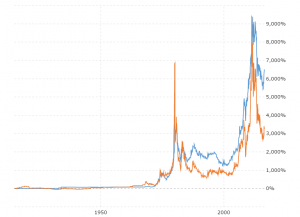Collecting National Bank Notes
Collecting bank notes is a natural companion to collecting coins, and many collections contain both. In the past people put their trust in hard coins of precious metals, but as banking developed the idea of issuing a piece of paper, which the bank would turn back into coins on request, grew. Before the Civil War there were many banks, controlled by the states, which often had shaky finances, and their notes could quickly become worthless. During the Civil War, as part of the increased control of the nation by the Federal government, The National Banking Act of 1863 was introduced. This created a network of National Banks, controlled by the federal government, empowered and chartered to issue bank notes backed to 90% by bonds the banks had to purchase from the US Treasury. A quick conversion of state notes to National notes was encouraged by a sliding tax on the conversion – 2% the first year, 20% the second year, and 40% in the third year. State bank notes quickly disappeared.
National Bank Notes were issues from 1863 to 1935, in all the states and US territories. In 1935, during the Great Depression, the Federal Reserve was created, and it bought back the bonds that secured the National Notes, so they had to be taken out of circulation. The collecting of notes from this period, issued by many banks, is a fascinating field, with many keen collectors competing for rarer notes. In 2010 a collector paid $161,000 for a note issued in what is today Washington State. At the other end of the spectrum, notes from larger banks can be bought for one or two hundred dollars, do there is lots of scope for collectors of all kinds.
Often called ‘hometown’ notes, National Bank Notes were issued by small banks in almost every town – probably including your own – and they all carry three numbers. Essential is the national charter number of the bank – proof that the bank can issues notes, and therefore proof of the reliability of the note itself. As well there are two serial numbers, the bank’s number, for its issue of the note, and the Treasury serial number, which reflects the total number of notes of the particular series and denomination issued by all the banks across the country.
For most of the period they were issued National Bank Notes were much larger than today’s bills. They feature the name of the bank prominently, rather than the words, ‘United States of America’ seen on modern bank notes. Each note is hand-signed by an officer of the bank – which often led to the very low serial numbers being kept by them as a souvenir, and so gives them extra collecting value, as they may never have entered circulation. The pictures of important people used on the notes are of course different from those seen today, and many notes have elaborate scenes of the times printed on them – complexity of the design was a means of reducing forgery, as it still is today.
The final series of notes issued was very different, and therefore very collectible. This was the series of 1929, and the bank notes were smaller, more like modern bills. The names of the banks are less prominent, and the serial numbers and seals are in brown, making them easily recognized. This series is very popular with collectors and could be a great place to start collecting National Bank Notes.
















